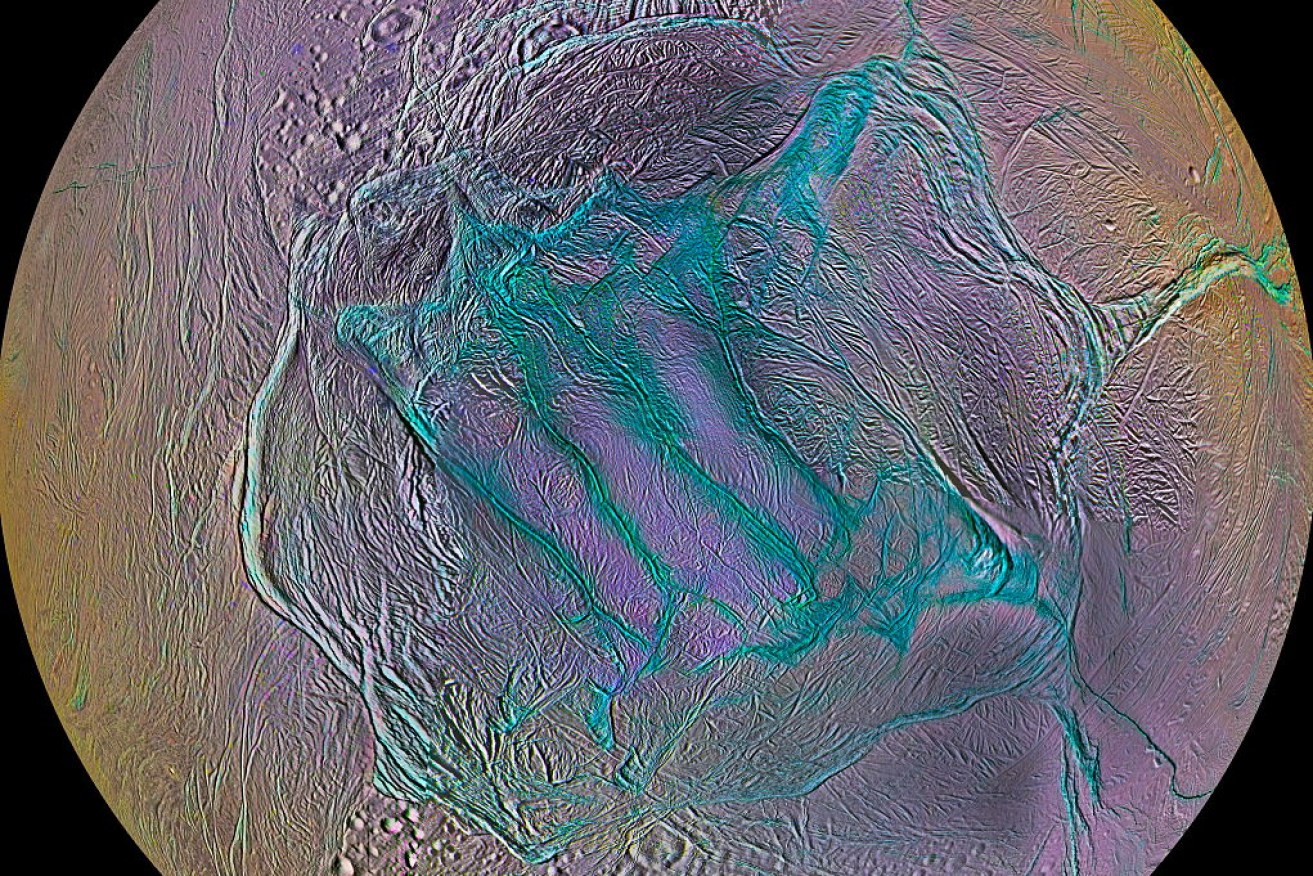The place most likely to harbour extra-terrestrial life

The Cassini detected compounds related to life when it orbited Enceladus. Photo: Getty
Enceladus is only 500 kilometres wide, but the tiny icy moon is a massive contender in the search for extra-terrestrial life.
Now, lab experiments suggest it’s possible the right kind of microbe could, in theory, call the small satellite home.
The work was reported in Nature Communications on Wednesday.
Saturn’s sixth-largest moon has been a target for astro-biologists since the Cassini mission pointed to the presence of a salty ocean under its cracked and cratered crust.
The surface of Enceladus’ south pole, too, is marked by a series of fractures, from which jets of gas and dust are blasted up to 80 kilometres into the atmosphere.
When the Cassini spacecraft flew through these jets, it sniffed out compounds related to life, such as hydrogen gas and methane.

The Cassini spacecraft snapped this image of Enceladus’ jets, near the moon’s south pole, in 2009. Photo: NASA/JPL/Space Science Institute
This caused a stir in astrobiology circles. The jets, it was thought, might be powered by hydrothermal vents: openings on the sea bed that spew hot, mineral-rich water.
On Earth, hydrothermal vents crawl with organisms, including microbes that produce methane known as methanogens. If similar environments are found on extra-terrestrial ocean worlds, they too, might harbour such life.
To test this theory, a team from Austria and Germany examined three species of methane-producing microbes to see if they could survive in Enceladus’ subsurface ocean.
The problem is, despite Cassini’s reams of data, planetary scientists don’t know exactly what is in the subsurface ocean, let alone how warm it is, and how pressure changes with depth.
So, the researchers had to test a range of conditions suspected to be present below Enceladus’ crust.
“The important thing for us was to be as broad as possible with all the experiments,” said lead researcher Simon Rittmann, a microbiologist from the University of Vienna.
Dr Rittmann and crew cultivated methane-producing archaea – primitive organisms that churn out methane from carbon dioxide and hydrogen gas – in 120-millilitre bottles filled with different compounds and topped up with gases.

An artist’s impression of Enceladus showing the ocean enveloping it. Photo: NASA
Some bottles were pressurised, to mimic different depths of the ocean.
And then the researchers measured the microbial mass that grew, and the amount of methane they produced.
One microbe, methanothermococcus okinawensis, thrived in Enceladus-like conditions to crushing pressures of 50 bars. That’s equivalent to being 500 metres underwater on Earth.
This isn’t too surprising, as the microbe was harvested from a hydrothermal vent 972 metres beneath the waves, south of Japan.
Methane may not be produced by microbes
Even though these microbes can thrive and produce methane in Enceladus-like environments, that’s not to say they or any other life forms actually exist on the moon itself, Dr Rittmann said.
Microbes aren’t the only source of methane. Chemical reactions in rocks, for instance, can make the gas – no life required.

Enceladus is Saturn’s sixth-largest moon. Photo: Getty
Differentiating this geological methane and biological methane from microbes is no easy feat – especially on an icy moon, more than a billion kilometres away.
Further studies to detect chemical signatures of biological organisms would be needed.
“You could look at different isotopes of carbon dioxide or methane, maybe in combination with proteins or lipids from microorganisms,” Dr Rittmann said.
“Then we might have an indication that there could be life on Enceladus.”
-ABC








